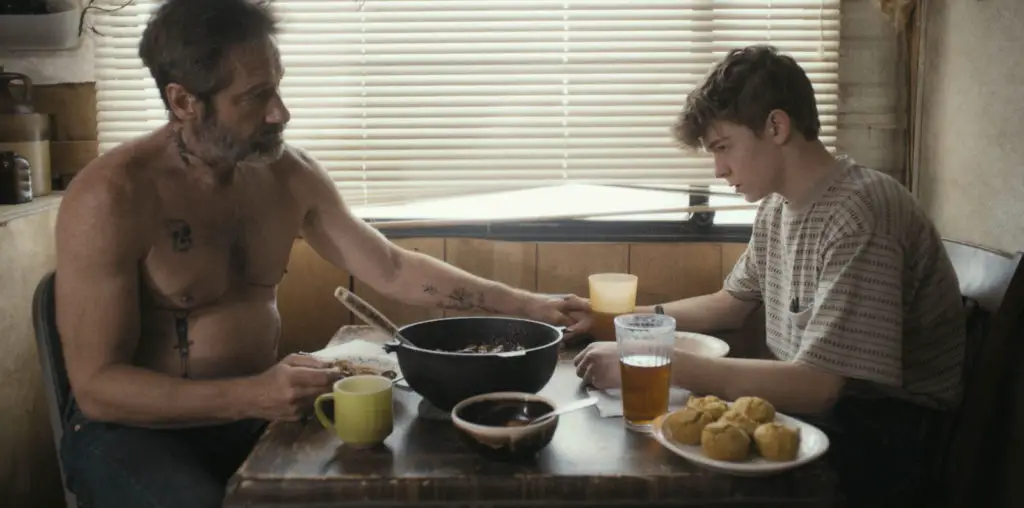
Finally, the stars have been eclipsed by film. This year–thanks in part to “The Perfect Storm”–may well be remembered as the one where movies briefly won back the upperhand and put celebrities into the background. “The Perfect Storm” is, fittingly, the perfect example, of how the newest visual effects movies have the capacity to overwhelm everything–from actors to plotlines–except in the end, maybe, their audiences.
“The Perfect Storm” story was originally delivered to the world by journalist Sebastian Junger in his best-seller book of the same name, which chronicled the true story of what happened when the worst storm in modern history hit the Eastern seaboard. In film as in book, this sea-adventure tale revolves around the unlucky bunch of boaters who had the misfortunate of being at sea at the time, principally focusing on the vessel Andrea Gail and its crew of swordfishing fishermen.
The movie starts by introducing us to the Gail guys at land. There’s Captain Billy Tyne (George Clooney), a divorced and hard-assed type of guy; Bobby Shatford (Mark Wahlberg), a soon-to-be divorced but endearing fellow; Murph Murphy (John C. Reilly), a man whose supporting a child he’s drifting from; Alfred Pierre (Allen Payne), the token African-American who’s also h***y; Bugsy (John Hawkes), a goofy guy who can’t get laid; and Sully (William Fichtner), a strapping dude with an attitude problem.
Billy’s recently come back from a less-than-successful swordfishing trip, and so the boys are quickly set back on track to head out for more fish and, consequently, more money. The foreshadowing begins early on as chick-Captain Linda Greenlaw (Mary Elizabeth Mastrantonio) comes in to dock bearing the frozen-packed body of a died-at-sea crew member; let’s just say, it’s a dangerous profession. Bobby’s girlfriend, Christina Cotter (Diane Lane), is more than a little scared when it’s time to see them off.
From the get-go, the characters are offered only as simple cut-outs, stereotypical representations of people with little depth. Left out are the more complex facts of the real-life central players–that Billy was so hard-nosed he was known to fake static from the ship to avoid communications or that love-birds Bobby and Christina had five children, two marriages, and only one divorce between them. All are condensed from book-to-film, ultimately to the detriment of audiences looking to identify with similarly flawed personas.
Billy decides to head way out to the Flemish Cap, taking the Gail so far that it’s nearly off the map. The payoff ultimately ends up being worth it, but as the ship heads back and fish-refrigeration breaks down, the “perfect storm” comes in. Uh-oh. Three storm fronts, it turns out, are converging together into a storm deemed perfect as it can get no forseeably worse; waves of 100 feet and winds of Force 12 are predicted. Yet here, while things end up looking mighty dire for those on the Andrea Gail, as the storm takes over and the movie’s greatest character, the storming ocean, makes her debut, the film-going experience for a time gets good.
The story of the Gail is peppered with other dangerous incidents going-on at the same time in the midst of the watery whirlwind–from three folks chugging to Bermuda on a smallish boat, to the recurring rescues performed by our great Air Force and Coast Guard. The Andrea Gail’s ensemble cast, coupled with an ensemble plotline, allows the not entirely known story of what really happened to the Andrea Gail to be taughtly drawn out. Ultimately, it doesn’t do much more than illustrate what happens when the, per capita, most dangerous profession gets married to the most dangerous weatherfront we’ve ever known.
Most of the lead performances “The Perfect Storm”‘s actors illicit against the backdrop of lots of gray water are disappointing. Clooney (“Three Kings”) looks uninspired when confronted with a required subtlety; Lane (“A Walk on the Moon”) is at her worst; and even the usually amazing Reilly (“Magnolia”) looks bored. Some stand-out performances are offered: Wahlberg (“Three Kings”) displays again he is one of his generations most underrated; Fichtner (“Passion of Mind”) is powerful; and Hawkes (“I Still Know What You Did Last Summer”) is a charm.
But it’s director Wolfgang Peterson (Academy Award-nominated “Das Boot”) who just may be the one to be held responsible for “The Perfect Storm”‘s frequent imperfections. The first hour of the film where everyone plays getting-to-know-you-so-I’ll-care-about-you-later with the movie’s main characters is so chock full of clichés, saccharine, and general lameness, you’d think you were watching an 80’s B-movie, not the summer’s most-hyped extravaganza. When Peterson finally throws the towel into the ocean with all the rest and lets the fellas at Industrial Light & Magic take over, everyone breathes a sigh of relief, for awhile.
After all, it’s the effects, and not too much else, of “The Perfect Storm” that are in and of themselves a sight to behold. Realistic? Well, not exactly. Cool? Hell, yes. I spent a lot of time identifying with boaters by trying not to puke; it’s the hydro-Twister all the kids have always wanted but didn’t know it.
In the end, “The Perfect Storm” makers forgot the best part of a true story is always the true story. The truth of the matter is the world’s most dangerous (yes, yes, per capita) profession is populated by “high-rollers”–as Junger describes them–extreme men on an extreme money race to reap the biggest reward. They were from a place called Gloucester, Massachusetts, with a unique history all its own, where they drank all night and spent all their money at the Crow’s Nest bar, and had gathered around them a lot of women who loved them viciously. They were enigmas, and they weren’t all heroes. Too bad “The Perfect Storm” dispenses with these fascinating realities to offer what amounts to not much more than a really, really, really big wave.
